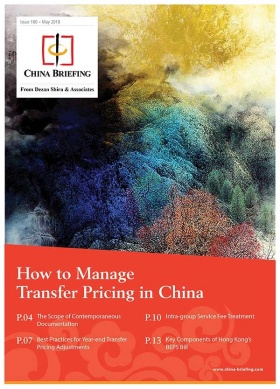US, China Reach Trade Truce, Announce 90-day Ceasefire at G20 Summit
US President Donald Trump and Chinese President Xi Jinping have struck a temporary 90-day ceasefire to deescalate trade tensions between the world’s two largest economies.
The truce was formed following a high-stakes working dinner on the sidelines of the G20 meetings in Buenos Aires, Argentina on December 1, 2018.
The US-China ceasefire raises prospects for a larger deal to resolve the trade war between the two countries and US grievances over China’s alleged unfair trade practices. The two countries now have until March 1, 2019 to strike a deal before additional tariffs are implemented.
However, while the agreement provides breathing room for the US and China – and the global trading system as a whole – a final resolution to the US-China trade war remains far from certain.
Temporary truce
According to the agreement, the US and China will not increase or introduce new tariffs for 90 days. Existing tariffs, however, will stay in place.
To date, the US has implemented three rounds of tariffs that exclusively target China:
- 25 percent tariffs on US$34 billion worth of goods, effective July 6, 2018;
- 25 percent tariffs on US$16 billion worth of goods, effective August 23, 2018; and
- 10 percent tariffs on US$200 billion worth of goods, effective September 24, 2018.
With the ceasefire, the above tariffs will remain in place. However, tariffs on US$200 billion worth of goods were previously set to increase from 10 percent to 25 percent from January 1, 2019. Now, these tariffs will not be increased for 90 days, that is, until March 1, 2019.
Additionally, the US had previously threatened to slap tariffs on all remaining Chinese exports if no progress was made at the G20 meetings, which would amount to new tariffs on approximately US$267 billion worth of products. These tariffs also will not be implemented before March 1, 2019.
For its part, China has responded with tariffs ranging between five and 25 percent on US$110 billion worth of US goods. While China has comparatively less room to implement new tariffs as it imports significantly less than it exports to the US, China also will not increase tariffs during this period.
Commitments from China
In order to secure the 90-day ceasefire from the US, China agreed to a number of additional commitments.
According to a statement from the White House, China will purchase a “very substantial” amount of agricultural, energy, industrial, and other products to reduce the bilateral trade imbalance. The statement notes that the exact amount has not yet been agreed upon.
The White House statement also said that Xi is open to approving the US chipmaker Qualcomm’s purchase of Dutch semiconductor company NXP. Qualcomm scrapped its US$44 billion plan to purchase NXP after failing to acquire approval from China’s State Administration of Market Regulation, which oversees anti-monopoly regulations.
Further, the read-out stated that Trump and Xi have agreed to “immediately begin negotiations on structural changes with respect to forced technology transfer, intellectual property protection, non-tariff barriers, cyber intrusions and cyber theft, services and agriculture.”
Unrelated directly to trade, China has agreed to crack down on the production and distribution of Fentanyl. Fentanyl is a synthetic opioid primarily produced in China that has caused thousands of deaths in North America in recent years.
Uncertain resolution
The truce, although temporary, is a positive step towards a resolution to the US-China trade war. The tariffs already implemented by the two sides are substantial, but the additional tariffs threatened by the US would mark an even more dramatic escalation were they to come into force.
Nevertheless, businesses should continue to brace themselves for heightened tariffs. The US has demanded that China make dramatic changes to its economic and trade practices, including altering its industrial policy. While the US and China have agreed to negotiate, China appears unlikely to fundamentally alter its policies, and it is unclear whether Trump will be satisfied with a deal that falls considerably short of his demands.
Further, the differences between the statements released by the US and China suggest that the two sides hold substantial gaps about expectations for negotiations. For example, the Chinese statement (and official Chinese media) does not mention the 90-day deadline, only that tariffs will not be raised for the time being and that the two sides will negotiate.
Moreover, the Chinese statement omits some of the US language and tends to refer to its commitments in broader terms. It does, however, include some points not included in the US statements, such as that the two sides agree to boost market access and will work toward scrapping all tariffs.
Ultimately, it is possible that a final agreement lands somewhere in between the elimination of tariffs and tariffs on all goods. For example, the US and China might strike a deal where China makes concessions but does not fundamentally alter its industrial policy. In this scenario, the US could leave “permanent” tariffs on the initial US$50 billion worth of goods – which mostly target products relating to Made in China 2025 – but removes tariffs on other products.
Although the US-China trade war truce comes with its fair share of caveats, it opens the door to a potential resolution. Before then, however, foreign businesses should continue to make contingency plans to reduce their exposure to extra tariffs and other supply chain risks arising from the dispute.
About Us
China Briefing is produced by Dezan Shira & Associates. The firm assists foreign investors throughout Asia and maintains offices in China, Hong Kong, Indonesia, Singapore, Russia, and Vietnam. Please contact info@dezshira.com or visit our website at www.dezshira.com.
- Previous Article Fraud in China: Mitigate Your Risk Exposure
- Next Article 5 Fraud Prevention Strategies to Protect Your Business in China







